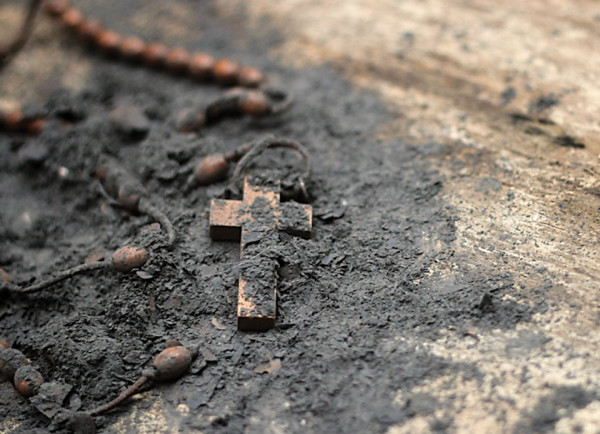Ash
Appreciating ash requires more sensitivity than enjoying most of Guatemala’s dazzling colors. Steel-gray, dull, plain old ash seems uninteresting. Worse, read in your novel that “his face turned ashen,” and you know there’s big trouble ahead.
Cleaning up ash from floors and furniture isn’t much fun after breezes sift some of the volcano’s recent burps indoors. Ash gets even more serious when it drifts along the airport runway, stopping big jets for fear of engine damage.
After the last few belches of volcanic ash, I swept off the terrazzo and poured the dustpan-full into a glass jar. Hey, it’s not just one shade! The sweepings were layered, charcoal to sand, some specks shiny, some flat discs. Like snowflakes, these new arrivals from the inner Earth were all different.
Ash-gray tones around town are all different, too. Take the colonial cobblestones, which of course are just ash that’s been solidified through eons of pressure. There are at least 20 different grays in the street just outside our portón. I counted that many as a street painter was finishing a watercolor of our block. He smiled and commented how getting the different gris street shades just right was the toughest part of this streetscape.
“Mira,” and he pointed along our driveway, recently paved with interlocking concrete blocks. “Todo diferente”—and the varied ash colors were clearly different.
Look around town for yourself and see how varied Guatemalan volcanic ash can be. And be grateful you don’t have to paint all the shadings. Just enjoy them.
